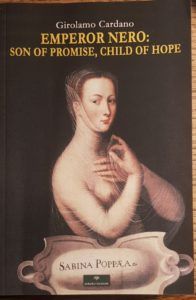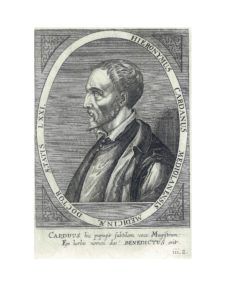An ol d newspaper clip, inside a secondhand book by Seneca that
d newspaper clip, inside a secondhand book by Seneca that
I bought on a stall, falls on the floor like a butterfly. It is an article
from the Washington Post, the date is June 30, 1981. The title of this
small clip that reproduces an Associated Press dispatch is ‘The Ghoul
Pool’. It says:
About 30 professors at the political science faculty of the Catholic
University of America were asked to name the worst villains in
history. Within the top ten appears emperor Nero, with such
motivation: ‘Among his deeds were the setting afire of Rome so that
he could build a city more aesthetically pleasing . . . the sparking of several civil wars and
the squandering of much of the army’s salaries for his foolish delights.’
Alas! The Hollywood style reading of history was still widespread in 1981, even among academics.
As a matter of fact, all such charges are untrue, and historically unfounded, as the reading of any modern-day biography of the great Roman emperor could easily prove.
It was Girolamo Cardano who demonstrated this 450 years ago, and he did it just by reading between the lines of the works of those partial historians. The figure of Nero described by Cardano could be compared, using today’s standards, to that of a Labour politician, perhaps, even a socialist, who got bad-mouthed by the Tory party of his day.

Napoleon, with his analytical capacity, could see that Nero was loved by the people
because he never burdened the poor, but oppressed the great.
Nero was not in Rome when the great fire started and, after
rushing back, did all in his power to help relieve the sufferings of the
homeless citizens affected, offering shelter in his own gardens and in
the buildings of the Campus Martius. It is not true that he accused
the Christians of the fire, and had thousands of them executed, as
we read in Tacitus and Suetonius, simply because there were very few
Christians around. The first author to speak about the Christians
being singled out as arsonists was Tertullian, writing at the end of
the second century. Probably, as Stephen Dando-Collins acutely
notes, the texts of Tacitus and Suetonius were corrupted by medieval
monks in their scriptorium. Christians were not the victims, but
followers of the Egyptian goddess Isis, who were infamous for using altars with fire during their ceremonies. This could explain also why when they were executed animal skins were put on them as a mockery, for followers of that cult worshipped animals (hence also Tacitus’ definition of them as possessed by an insane ‘hatred against mankind’.) In fact, there are no known Christian martyrs of that period, except Peter and Paul, who were executed not in connection with the fire, but later, at the time of great rebellion in Judea.
One of Nero’s alleged crimes was the murder of his adopted brother, Britannicus, who dropped dead during a banquet. We should note
that in antiquity there were no poisons which could kill in a matter of seconds. It is well documented that Britannicus was epileptic, and
a seizure could have caused an airways obstruction resulting in suffocation and turning his face blue, as it was reported by the
historian.
Nero’s reign had been one of the most peaceful in Roman history; civil wars were common before him, and after his death. He
did not squander the treasury, but increased the revenue of the state, putting also a large part of his personal wealth into the public coffers.
Italian historian Mario Attilio Levi was one of the first to critically re-examine his reign. Tacitus, Suetonius, Dio Cassius, the two Pliny,
Plutarch, and even Josephus, treated Nero not a historical figure, but like an object of horror, a buffoon, transforming hearsay into
facts. Nevertheless they were all connected with the senatorial class and with the Flavian emperors: Vespasian, Titus and Domitian, who
were motivated to bolster their own shaky legitimacy to rule by pouring scorn over their predecessors.
Ettore Paratore, another illustrious Italian Latinist, concurs on this point, admitting that those historians reduced the golden age of
the Roman Empire, corresponding with the rule of the JulioClaudian dynasty, into a sequence of murders, orgies and follies.
Here is the link to buy it in POD or KINDLE in Amazon:
https://www.amazon.it/Emperor-Nero-Promise-Child-Hope/dp/1689118539/ref=sr_1_2?__mk_it_IT=%C3%85M%C3%85%C5%BD%C3%95%C3%91&keywords=emperor+nero%3A+son+of+promise&qid=1579793149&sr=8-2
